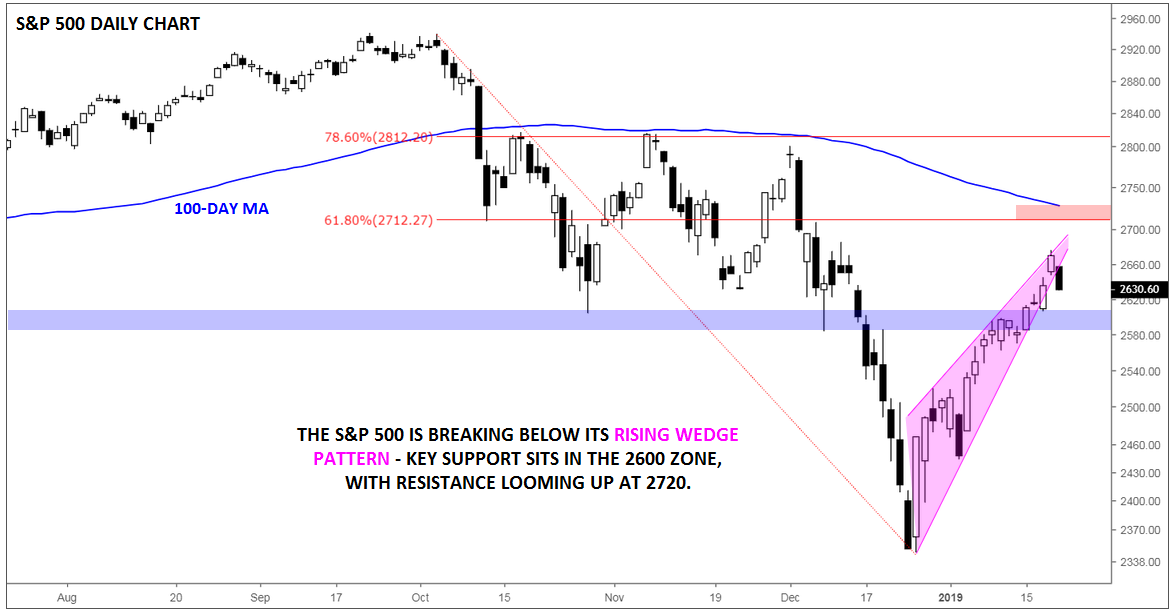Fundamental headwinds due to the government shutdown along with technical weakness, a break of rising wedge pattern, are putting pressure on stock indexes, notes Matt Weller.
The U.S. stock markets were closed yesterday in remembrance of Dr. Martin Luther King, and given the headwinds the world economy faces, perhaps policymakers could benefit from his overriding message of inclusion and cooperation.
Many of the biggest risks facing the global economy stem from a failure to “get along,” both internationally (the ongoing US-China trade war) and domestically (the U.S. government shutdown & Brexit). The last 24 hours highlighted these differences on numerous fronts: The U.S. extradition request for a prominent Chinese businesswoman, the IMF’s decision to downgrade its global growth forecasts (due partially to trade tensions), the lukewarm reception to PM May’s Brexit Plan B bill, and the increasingly-contentious U.S. government shutdown.
As a result, traders are aggressively selling U.S. equities, with major indices unwinding the gains from Friday’s trade-optimism-induced rally. From a technical perspective, the S&P 500 has now broken down from its rising wedge pattern off the Boxing Day panic low (see chart below). Despite the seemingly bullish name, this price action pattern shows that buyers are struggling to push the price higher on each subsequent swing. It is a classic sign of waning buying pressure and often portends a bearish reversal. That said, we’re hesitant to make any broad conclusions off merely a single down day, especially following such a strong rally off the lows.

Source: TradingView, FOREX.com
Moving forward, bulls will want to see if prices can hold above the key previous support level in the 2600 range. A break below there could open the door for a retest of the late December lows. Meanwhile, the key area to watch, if prices rally, will be the confluence of the 61.8% Fibonacci retracement of the Q4 swoon and the 100-day moving average near 2715.
Shutdown tensions are poised to pick up with 800,000 government employees set to miss their second paycheck on Friday, and three of the four largest publicly-traded companies on the planet set to report Q4 earnings next week—Apple (AAPL) on Tuesday, Microsoft (MSFT) on Wednesday and Amazon (AMZN) on Thursday — volatility may be here to stay.


















